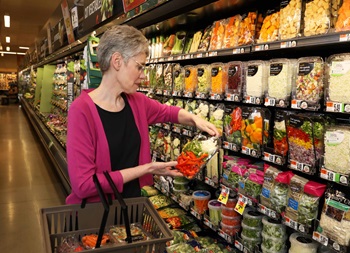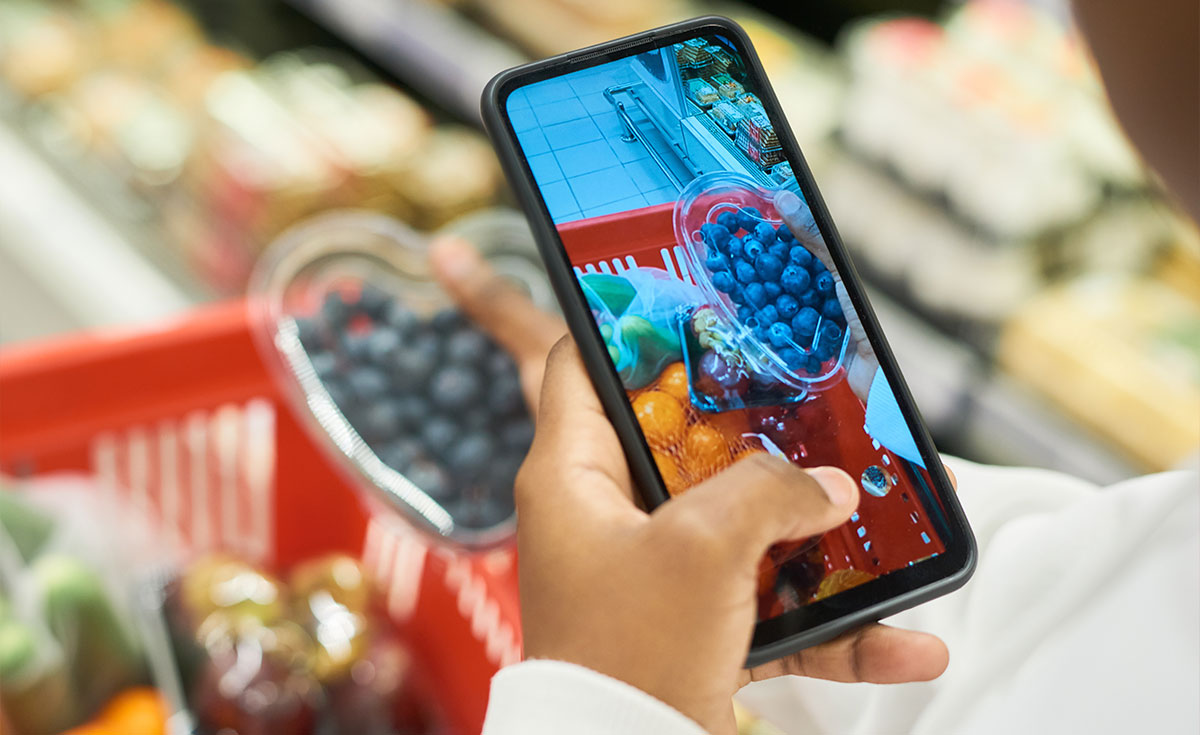By: Rick Stein, Vice President, Fresh, Industry Relations, Food Marketing Institute
As plant-based diets become more popular, is it time for grocers to have friendly plant- based “butchers” onsite? Or deploy produce department employees as produce mongers, similar to cheese mongers?
based “butchers” onsite? Or deploy produce department employees as produce mongers, similar to cheese mongers?
Just as consumers are rethinking fresh produce in their diets as they embrace more plant-based foods, grocers can also take a new look at their merchandising mindset for fresh fruits and vegetables. The opportunity is certainly ripe: the newly-released Power of Produce 2019 report finds that nearly 100 percent of American households buy fresh produce and 97 percent are trying to eat more of it.
Prepared by 210 Analytics LLC for FMI, the Power of Produce 2019 underscores the importance of merchandising in getting consumers to eat fresh produce more frequently, which is the key to lifting sales at grocery. According to the latest findings, 40 percent of product is sold on merchandising. Effective merchandising includes a combination of advertising, price and promotions, including in-store efforts that capture consumers’ attention, provide needed information and ideas and encourage them to return.
These in-store efforts can engage shoppers and drive continued category growth. With such a high household penetration, it isn’t as much about attracting new produce eaters as it is encouraging more eating occasions.
Form Follows Function:
According to the newest Power of Produce report, 38 percent of shoppers want their produce department to carry more snack-sized vegetables, compared to 15 percent in 2017. Likewise, 35 percent of shoppers are seeking more snack packs with fruit. By offering and merchandising more snack products, grocers can tap into consumers’ snack (and health) cravings and create new buying opportunities. Juicing is another way to capitalize on shoppers’ thirst for nutritious, produce-based and often-personalized offerings. Thanks to the growing number of inventive produce forms, like squash noodles and sweet potato cubes, shoppers are also exposed to new and intriguing items to branch out to items they haven’t bought before. That extends to produce varieties that seem new and trendy to consumers, such as dragon fruit.
Keeping It Local:
The Power of Produce 2019 reveals that 53 percent of shoppers want to see a greater assortment of locally-grown produce items at their primary store. There are ways that grocers can deliver on that interest and provide a local experience, such as setting up in-store farmers markets that replicate the charm and assortment of a community farmers market. On another level, some retailers own their own farms or have exclusive partnerships with growers to offer locally-grown fruits and vegetables under their brand or banner.
Putting the “Pro” in Produce:
To bolster eating occasions, grocers play a visible, crucial role in educating consumers about various types of fruits and vegetables and how to prepare them. Stores can conduct more demos, share information on their digital sites and maximize ways for employees to serve as resources, akin to a butcher or cheese specialist. Why just stock produce when you can spur sales by providing ideas and tips?
Download the Power of Produce 2019

 Industry Topics address your specific area of expertise with resources, reports, events and more.
Industry Topics address your specific area of expertise with resources, reports, events and more.
 Our Research covers consumer behavior and retail operation benchmarks so you can make informed business decisions.
Our Research covers consumer behavior and retail operation benchmarks so you can make informed business decisions.
 Events and Education including online and in-person help you advance your food retail career.
Events and Education including online and in-person help you advance your food retail career.
 Food Safety training, resources and guidance that help you create a company food safety culture.
Food Safety training, resources and guidance that help you create a company food safety culture.
 Government Affairs work — federal and state — on the latest food industry policy, regulatory and legislative issues.
Government Affairs work — federal and state — on the latest food industry policy, regulatory and legislative issues.
 Get Involved. From industry awards to newsletters and committees, these resources help you take advantage of your membership.
Get Involved. From industry awards to newsletters and committees, these resources help you take advantage of your membership.
 Best practices, guidance documents, infographics, signage and more for the food industry on the COVID-19 pandemic.
Best practices, guidance documents, infographics, signage and more for the food industry on the COVID-19 pandemic.
